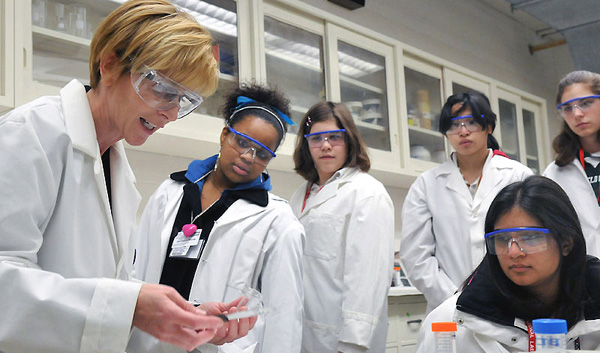
One of the most important and institutionalized forms of science communication is the peer-reviewed journal article. These articles are essential to disseminating information among researchers in specific fields of study, and the extent to which those journal articles are cited by researchers in later articles is of enormous professional importance to researchers – particularly researchers who work in academic settings. But it appears that many researchers face an uphill battle when it comes to getting citations and related professional benefits. Specifically, researchers who are women.
On Dec. 11, Nature published an article online called “Bibliometrics: Global Gender Disparities in Science,” which evaluated 5,483,841 papers published between 2008 and 2012 and indexed in the Thomson Reuters Web of Science databases (full citation for the paper is below). The researchers report that “in the most productive countries, all articles with women in dominant author positions receive fewer citations than those with men in the same positions.” (Editor’s note: In the interest of full disclosure, this blog is part of the SciLogs blog network, which is associated with Nature.com.)
The article also notes that, “given that citations now play a central part in the evaluation of researchers, this situation can only worsen gender disparities.” And those gender disparities are real.
For example, in 2001 (a year for which I could find data), women received 45 percent of doctoral degrees in science and engineering in the United States. In 2010 (another year for which I could find data), women at U.S. research institutions still made up only 20.6 percent of full-time, full professors with science, engineering, and health doctorates.
That’s a pretty big gap. And it is worth repeating that citation rate is important to a university researcher’s career prospects, and therefore researchers with lower citation rates are less likely to become full professors.
So, let’s look at some of the numbers in the Nature paper on disparity in citation rates.
For papers with a single author, the citation rate for women in the U.S. was 1.11. The citation rate for men in the U.S. was 1.26. For papers with multiple authors (all within the U.S.), the citation rate for papers with a female lead author was 1.13. With a male lead author? 1.24. The trend held true for international collaborations.
But while this disparity in the U.S. is significant, this problem is not limited to the United States.
For every single one of the 30 most productive countries, and in every category, men had higher citation rates than women. Apparently, institutionalized sexism in the research community is one of the few things that the U.S., Russia, China, Japan, Israel, and Iran can all agree on.
I’m not sure what the solution is, but clearly this is something we need to be aware of.
Also, I’m hoping someone can satisfy my curiosity on one point: What I would love to see, and what the Nature paper doesn’t provide (or, at least, I couldn’t find it), are clear numbers on, well, the number of papers published. For example, the Nature paper tells me the overall citation rate for papers with a sole, female author in the U.S. – but it doesn’t tell me how many papers there were from sole, female authors in the U.S. (There was an interesting paper on gender and scholarly authorship published in PLOS ONE earlier this year, by Jevin West, et al., but it didn’t break down the percentage of female authors in science and engineering fields.)
Citation: “Bibliometrics: Global Gender Disparities in Science,” Nature, Dec. 12, 2013, Vincent Larivière, Chaoqun Ni, Yves Gingras, Blaise Cronin, and Cassidy R. Sugimoto. DOI: 10.1038/504211a

Hi Matt,
Is this just a reflection of the number of women in science positions in which we’d expect publications? we already know there are more guys, so I’m not surprised that more guys are cited. I dont see it as a separate problem, just another way o looking at the data and coming to the same conclusion. And I might add a highly useful analysis for corroborating the insidiousness of the problem. Ta!
LikeLike
Hi Christine,
that’s a good question. I don’t think that it is a reflection of the number of women in science positions from which we’d expect publications. That’s because the authors looked at citation rates per paper. I think it’s also noteworthy that the trend is consistent across all categories (single-author; domestic collaboration; international collaboration) and across the 30 top-producing nations, as shown here: http://www.nature.com/news/gender-output-collaboration-and-citation-data-7.14179?article=1.14321
LikeLike
I wonder if fewer women among high-level researchers and less citations are one and the same result. It would be interesting to compare the publication record of males and females at the same career level.
LikeLike
Pingback: [BLOCKED BY STBV] Morsels For The Mind – 13/12/2013 › Six Incredible Things Before Breakfast
I am a female postdoc at Los Alamos National Laboratory, and there is a definite shortage of women here (and no effort in recruitment as well, in fact I would argue the opposite is taking place). One of the issues I see with women is the amount of public service we have to do. To meet the diversity requirements of the lab there must be one female member on all committees. This has led to my involvement on 3 committees since coming here, something none of my male colleagues have had to do.
LikeLike